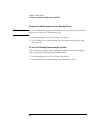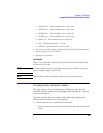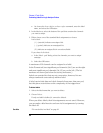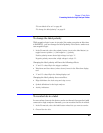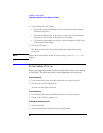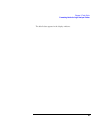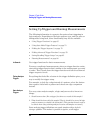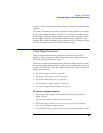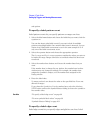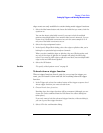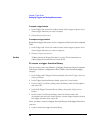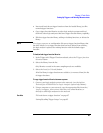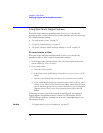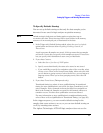
64
Chapter 2: Task Guide
Setting Up Triggers and Running Measurements
Setting Up Triggers and Running Measurements
The following information is a generic discussion about triggering in
logic analyzers. Depending on the logic analyzer type, and the state or
timing mode being used, some functionality may not be available.
• “Using Trigger Functions” on page 65
• “Using State Mode Trigger Features” on page 70
• “Editing the Trigger Sequence” on page 72
• “Editing Advanced Trigger Functions” on page 78
• “Saving/Recalling Trigger Setups” on page 85
• “Running Measurements” on page 86
In General...
Use trigger functions for basic measurements.
For more complicated measurements, where no trigger function exists,
start with a trigger function that's similar to the measurement you want
to make. Then, break down the trigger function and edit the advanced
trigger sequence levels.
Timing Analyzer
Triggers
Everything that looks like a button in the trigger definition gives you a
way to modify the trigger setup.
For example, to look for a edge instead of a pattern, select the button
that equates a label with a pattern and choose an edge comparison
instead.
State Analyzer
Triggers
For every state analysis sample, a logic analyzer needs to know two
things:
1. Should some action (like a trigger) be taken as a result of this sample?
2. What should be done with this sample? That is, should it be stored in logic
analyzer memory or should it be discarded? (This question doesn't need to
be asked when using a timing analyzer because all samples are stored.)
State analysis trigger definitions are made simpler with a default
storage qualifier. This makes it possible to ignore, at all trigger



